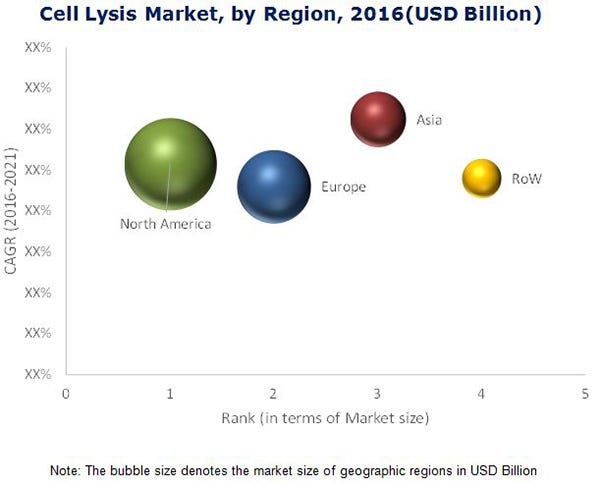The major factor driving the growth of this Cell Fractionation Market is increasing government funding for research, the high prevalence of diseases, expanding biotechnology and biopharmaceutical industries, and a growing focus on personalized medicine
The Global Cell Fractionation Market is expected to reach $ 3.84 billion, at a CAGR of 10.3%
Among the various product, the consumables segment is expected to account for the largest share of the Market. The consumables Market includes reagents and kits, beads, and disposables. Reagents and kits are further classified into enzymes, detergent solutions, and other reagents and kits. Enzymes segment is projected to grow at the highest CAGR.
The high growth of enzymes segment can be attributed to the increased investments for cell-based research.
Download PDF (Cell Fractionation):
Cell Fractionation Market segmentation:
· based on products
· based on diseases
· based on techniques,
· based on end users
· based on regions.
Cell Fractionation Market is research laboratories and institutes, biopharmaceutical and biotechnology companies, and others. The research laboratories and institutes segment are expected to account for the largest share of the global Market in 2016. The rise in funding and grants by government organizations such as National Institutes of Health (NIH) for stem cell and other cell-based research has resulted in the increasing use of cell analysis and fractionation products in research institutes.
The Major Players Operating in the Cell Fractionation Market:
The major players in this Market include Beckman Coulter, Inc. (U.S.), Becton, Dickinson and Company (U.S.), Bio-Rad Laboratories, Inc. (U.S.), Cell Signaling Technology, Inc. (U.S.), F. Hoffman-La Roche AG (Switzerland), Merck KGaA (Germany), Miltenyi Biotec (Germany), QIAGEN N.V. (Netherlands), Qsonica, LLC. (U.S.), and Thermo Fisher Scientific Inc. (U.S.).
Geographical Detailed Analysis for Cell Fractionation Market:
Geographically, the Cell Fractionation Market is dominated by North America, followed by Europe, Asia, and the Rest of the World (Row). Growth in the North American segment is primarily driven by increasing aging population and rising government funding in the North American countries.
Read More in Detailed (Cell Fractionation):

No comments:
Post a Comment